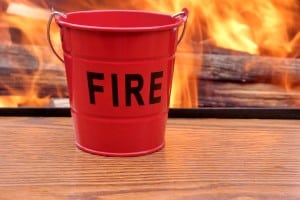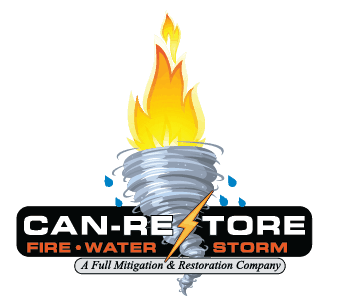
Fire damage restoration can include many steps, all of which can depend on the type of fire and the extent of the damage. A professional can come in and assess the situation and have a pretty clear picture of both. Many times some of the worst damage can be caused by water. Why is there water damage after a fire, you ask? Good question. The ABC’s of fire and water damage are here for you.
1. The Real Deal About Water and Fire
Fire can sweep through a home or building incredibly quickly, and the quicker it gets put out, the less damage that will have been done. How is this accomplished? With water. Lots and lots of water.
Firefighters work rapidly to extinguish the fire to reduce the amount of damage, prevent injuries or death, and to prevent the spread of the fire to other structures. That’s where all that water comes from.
As the water pours out of the fire hoses it does more than put out the fire, it fills the home with water affecting pretty much everything in its path. What isn’t destroyed by the fire will certainly be affected by the water.
2. The Real Deal About Water Damage
We tend to imagine that the worst damage after a fire is from the fire itself, but in some cases the water damage is significantly worse than the fire damage. The water will work it’s way down through the structure, soaking everything in its path including the building materials, flooring, furniture and upholstery, and your belongings.
The water will start to break down the materials, and the longer it sits, the worse the damage. And the worst part of it all is that along with the water and the destruction it causes comes mold and mildew, an even greater force to be reckoned with, as mold is destructive and toxic and dangerous all on its own.
3. The Real Deal About Restoration
One of the first and most important steps in the restoration process is water extraction. Getting the water out as quickly as possible is critical to a successful restoration process. Here are some of the steps that need to be taken to make sure the breakdown of materials, the growth of mold, and the development of bacteria is stopped ASAP:
- Water extraction using commercial equipment that removes all of the water, even what’s moved below floors and in between walls
- Drying of the home or building using a combination of industrial fans with positive air pressure, drying equipment including wall cavity, cabinet, floor, and room dryers
- Dehumidifying the space to get rid of any remaining moisture
- Mold and mildew inspection, treatment, and mitigation to make sure no mold is left behind after the cleanup is complete
- Bacteria treatment of the area to make sure it’s sanitized and safe to return to
- Restoration of the space and any salvageable belongings
There is nothing good or fun about fire damage, but understanding the basics of what causes the damage and how to clean it up is essential to getting your house, and your life, back on track.
Now that you know that water is one of the primary culprits when it comes to damage after a fire, you can face it head on should it happen to you. And even better, you know the damage it can do and how to reduce the extent of it and manage water cleanup and elimination of dangers such as bacteria and mold.
If you’ve had a fire in your home or business, it’s too much to face on your own. Contact Can-Restore for help with fire damage restoration by calling (770) 735-2695.

